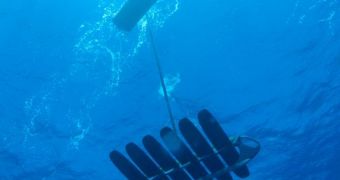Liquid Robotics Company was and still is a pretty young company, but it did the job when it was enlisted to create some self-powered robots meant to cross the world's greatest ocean.
Liquid Robotics came to be in 2007, but its biggest commission, or at least the most important, was for two pairs of Wave Glider robots.
The company provided the scientific community with the four robots last year, 2011, when they were launched in San Francisco, California.
The goal of the robots was to reach Australia, eventually. That means they had to cross the entire Pacific Ocean.
The Pacific is very peaceful compared to the planet's other oceans, at least after one gets past the edges of the Pacific Ring of Fire.
Nevertheless, even with few storms, only one of the four robots managed to complete the journey. One of the three others went off course, and is still off course 800 miles from Australia.
The other two suffered problems, so they had to be pulled from the so-called competition. A certain hurricane had a lot to do with this.
That left only “Papa Mau,” but this one completed the trip perfectly on December 8, 2012, and even gathered all the scientific data it was sent after in the first place.
The primary role of Papa Mau was to monitor the temperature of the sea in relation to location. Salinity was also measured, as were wave height and oxygen levels.
As for how the robot works, the Wave Gliders were actually the first wave-powered autonomous marine robots ever made. That means they transform the kinetic energy from the movement of the water into electrical energy.
“We are proud to see our Wave Glider not only survive the Category I hurricane, but also continue to communicate valuable real-time weather data as it battled 74 knot winds,” said Bill Vass, CEO of Liquid Robotics.
“Hopefully, autonomous platforms like the Wave Glider will make it possible to better predict the severity and risk to everyone in the Gulf Coast area in the future.”

 14 DAY TRIAL //
14 DAY TRIAL //